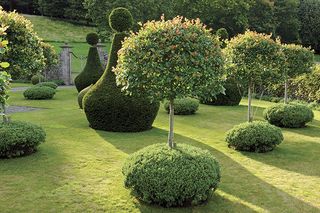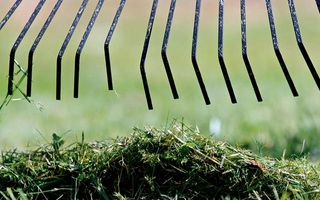Should you mow your lawn?
Monty Don ruffled a few feathers recently when suggesting that we should just let our grass grow as long as it likes. Is he right?

To mow or not to mow. That was the question recently raised by Monty Don, provoking the inevitable flurry of outrage. Scratch at the compacted turf and it’s clear that the lawns in his sights are precision-striped, dosed with weedkiller and mown to within a quarter-inch of their monocultural lives, but it did leave the general impression that lawns are a Bad Thing.
The lawn as we understand it didn’t exist until the 17th century. The RHS Dictionary of Gardening notes the first recorded use in 1674: it refers to ‘an area covered with grass, or other plants, usually closely mown to produce a dense low cover’.
The medieval lawn was a meadow jewelled with flowers, of the sort stood upon by the Lady and her Unicorn in the tapestries in the Musée de Cluny. To make one, you would have cut choice turves from a meadow then knocked them in place with a mallet. With the meadow grasses would have come all sorts of little flowery treasures. More recently, Dan Pearson, early in his career, planted a carpet of thyme — a lawn that released its scent when walked on. You could do the same with camomile.
Medieval lawns were cut a couple of times a year, with regular scything common by the 17th century. John Evelyn in Elysium Britannicum describes a type of ‘sith’, ‘narrower and thinner for fine carpet’ and, in 1625, Francis Bacon declared: ‘Nothing is more pleasant to the Eye than Greene Grasse, kept finely shorn.’

Mechanisation began in 1830 with Edwin Budding’s cylinder blade mower pulled by a horse wearing leather boots so as not to damage the grass. Steam power followed in 1897 and the petrol-driven six-horsepower engine in 1902.
The French pelouse — from poilu or hairy — originally meant an area of uniformly diminutive plants, but, by the 18th century, in what might seem a tautology, they talked of a pelouse de gazon (a lawn of turf) and envied the British climate that produced such lush lawns.
It's hard to like the coarse lawns grown in hot climes where scarce water is diverted for irrigation, but here, where most lawns are far from perfect — and we’ve learned not to water in a drought, knowing how quickly the grass recovers — it seems churlish to deny the pleasure of lying on the grass listening to the hum of mining bees and hoverflies. Our lawns may be lumpy from tunnelling moles, flecked with moss, speedwell, clover and dandelions but, come summer, if we are lucky, the yaffle will be back to worry out the chafer grubs.
Sign up for the Country Life Newsletter
Exquisite houses, the beauty of Nature, and how to get the most from your life, straight to your inbox.

How to prepare the lawn for summer growth
Scoring on home turf.
-
 If heaven is on earth, it might be in this home with a converted chapel that is now a swimming pool
If heaven is on earth, it might be in this home with a converted chapel that is now a swimming pool5 Wood Barton Town House is part of an exclusive 80-acre development in Devon that also comes with fishing rights on the River Avon and four bedrooms.
By James Fisher Published
-
 An Italian-inspired recipe for lemon-butter pasta shells with spring greens, ricotta and pangrattato
An Italian-inspired recipe for lemon-butter pasta shells with spring greens, ricotta and pangrattatoSpring greens are just about to come into their own, so our Kitchen Garden columnist reveals exactly what to do with them.
By Melanie Johnson Published